Preparation and Modification of Porous Polyetheretherketone (PEEK) Cage Material Based on Fused Deposition Modeling (FDM)
Abstract
1. Introduction
2. Materials and Methods
2.1. Composite Filament and Sample Preparation
- (1)
- Composite filament preparation
- (2)
- Sample printing
- (3)
- Heat treatment of samples
2.2. Structural Characterization and Performance Testing
- (1)
- Structural characterization
- (2)
- Performance testing
3. Results
3.1. Surface Morphology Characterization of Composite Filaments
3.2. Microstructural Characterization of Porous Samples
3.3. Oil Content and Oil Retention of the Materials
3.4. Tribological Properties of the Materials
4. Conclusions
- (1)
- Porous materials with different porosities were prepared based on the FDM process with NaCl as the porogenic agent and PEEK as the base material, and the porous materials were heat treated. During the preparation of composite filaments, the filaments with a high percentage of NaCl can be extruded by adjusting the heating temperature and reducing the screw speed; all samples can be prepared by the same printing parameters, and the pore size distribution of the porous samples is below 10 μm, which meets the pore size requirements of the cage materials.
- (2)
- Under the premise of meeting the pore size requirements, the oil content of porous samples prepared based on the FDM process was influenced by their own porosity, and samples with higher porosity also had higher oil contents and exhibited higher oil retention.
- (3)
- The porous cage material prepared by the FDM process exhibited the following tribological properties: under dry friction conditions, the higher the porosity of the porous material, the higher the friction coefficient. The friction coefficient of each sample showed the same pattern after heat treatment, and the friction coefficient of each sample decreased compared to that before heat treatment; under starved lubrication conditions, the friction coefficient of the porous PEEK material decreased significantly compared to that of the compact PEEK material, showing a good self-lubrication effect, and the porous samples reached the best self-lubrication effect after heat treatment. In this study, the optimal process parameters were the 60% mass fraction of NaCl, the 40% mass fraction of PEEK, and the applied heat-treatment process.
Author Contributions
Funding
Institutional Review Board Statement
Data Availability Statement
Conflicts of Interest
References
- Xie, Z.; Zhang, Y.; Zhou, J.; Zhu, W. Theoretical and experimental research on the micro interface lubrication regime of water lubricated bearing. Mech. Syst. Signal Pr. 2021, 151, 107422. [Google Scholar] [CrossRef]
- Yadav, E.; Chawla, V.K. An explicit literature review on bearing materials and their defect detection techniques. Mater. Today Proc. 2022, 50, 1637–1643. [Google Scholar] [CrossRef]
- Li, K.; Liu, Y.; Liu, J.; Chen, W. Study on the Performance of a Designed Annular Piezoelectric Microjet for Active Lubrication of Space Bearing. IEEE Trans. Ind. Electron. 2021, 69, 2728–2736. [Google Scholar] [CrossRef]
- Sun, J.; Yan, K.; Zhu, Y.; Hong, J. A High-Similarity Modeling Method for Low-Porosity Porous Material and Its Application in Bearing Cage Self-Lubrication Simulation. Materials 2021, 14, 5449. [Google Scholar] [CrossRef]
- Marchetti, M.; Jones, W.R., Jr.; Pepper, S.V.; Jansen, M.J.; Predmore, R.E. In-situ, on-demand lubrication system for space mechanisms. Tribol. T. 2003, 46, 452–459. [Google Scholar] [CrossRef][Green Version]
- Friedrich, K. Polymer composites for tribological applications. Adv. Ind. Eng. Polym. Res. 2018, 1, 3–39. [Google Scholar] [CrossRef]
- Gao, S.; Han, Q.; Zhou, N.; Pennacchi, P.; Chu, F. Stability and skidding behavior of spacecraft porous oil-containing polyimide cages based on high-speed photography technology. Tribol. Int. 2022, 165, 107294. [Google Scholar] [CrossRef]
- Bertrand, P.A.; Sinsheimer, J.D. Humidity-induced dimensional changes in cotton-phenolic ball-bearing retainers. J. Trib. 2002, 124, 474–479. [Google Scholar] [CrossRef]
- Bertrand, P.A. Absorption of Water and Lubricating Oils into Porous Nylon. U.S. ATR-95 (5826)-1, 10 January 1995. [Google Scholar]
- Zhang, Y.; Zhang, S.; Zhou, G.; Zhang, J.; Qing, T.; Zhou, N. The friction and wear behaviors of polyimide bearing retainer under point-contact condition. Ind. Lubr. Tribol. 2020, 72, 931–936. [Google Scholar] [CrossRef]
- Weyhrich, C.W.; Long, T.E. Additive manufacturing of high-performance engineering polymers: Present and future. Polym. Int. 2022, 71, 532–536. [Google Scholar] [CrossRef]
- Zhang, D.; Wang, T.; Wang, Q.; Wang, C. Selectively enhanced oil retention of porous polyimide bearing materials by direct chemical modification. J. Appl. Polym. Sci. 2017, 134, 45106. [Google Scholar] [CrossRef]
- Pei, X.; Friedrich, K. Sliding wear properties of PEEK, PBI and PPP. Wear 2012, 274, 452–455. [Google Scholar] [CrossRef]
- Zhu, Y.; Lin, S.; Wang, H.; Liu, D. Study on the tribological properties of porous sweating PEEK composites under ionic liquid lubricated condition. J. Appl. Polym. Sci. 2014, 131, 40989. [Google Scholar] [CrossRef]
- Wang, H.; Zhang, S.; Wang, G.; Yang, S.; Zhu, Y. Tribological behaviors of hierarchical porous PEEK composites with mesoporous titanium oxide whisker. Wear 2013, 297, 736–741. [Google Scholar] [CrossRef]
- Wang, Q.; Zheng, F.; Wang, T. Tribological properties of polymers PI, PTFE and PEEK at cryogenic temperature in vacuum. Cryogenics 2016, 75, 19–25. [Google Scholar] [CrossRef]
- Zhang, D.; Wang, C.; Wang, Q.; Wang, T. High thermal stability and wear resistance of porous thermosetting heterocyclic polyimide impregnated with silicone oil. Tribol. Int. 2019, 140, 105728. [Google Scholar] [CrossRef]
- Huang, X.; Wu, J.; Lu, X.; Feng, X.; Shi, Y. Tribological properties of porous PEEK composites containing ionic liquid under dry friction condition. Lubricants 2017, 5, 19. [Google Scholar] [CrossRef]
- Qiu, Y.X.; Wang, Q.H.; Wang, C.; Wang, T.M. Oil-containing and tribological properties of porous polyimide containing lubricant oil. Tribology 2012, 32, 538–543. [Google Scholar]
- Jia, W.H.; Ma, L.M.; Ren, S.L. Tribological behaviors of porous oil-containing PI/MSNT composite lubricating films. Tribology 2020, 40, 424–433. [Google Scholar]
- Wang, H.Y.; Zhang, S.; Wang, G.Y.; Zhu, Y.J.; Yang, S.H. Preparation and Tribological Properties of Porous Self-Lubricating Polyetheretherketone. Polym. Mater. Sci. Eng. 2012, 28, 137–140. [Google Scholar]
- Yan, P.X.; Zhu, P.; Huang, L.J.; Wang, X.D.; Gu, H.P.; Huang, P. Study on the Tribological Properties of Porous Polyimide Containing Lubricants. Tribology 2008, 28, 272–276. [Google Scholar]
- Vidakis, N.; Petousis, M.; Velidakis, E.; Tzounis, L.; Mountakis, N.; Korlos, A.; Grammatikos, S. On the mechanical response of silicon dioxide nanofiller concentration on fused filament fabrication 3D printed isotactic polypropylene nanocomposites. Polymers 2021, 13, 2029. [Google Scholar] [CrossRef] [PubMed]
- Vidakis, N.; Petousis, M.; Korlos, A.; Mountakis, N.; Kechagias, J.D. Friction Stir Welding Optimization of 3D-Printed Acrylonitrile Butadiene Styrene in Hybrid Additive Manufacturing. Polymers 2022, 14, 2474. [Google Scholar] [CrossRef] [PubMed]
- Zirak, N.; Shirinbayan, M.; Deligant, M.; Tcharkhtchi, A. Toward Polymeric and Polymer Composites Impeller Fabrication. Polymers 2021, 14, 97. [Google Scholar] [CrossRef] [PubMed]
- Cherrington, R.; Goodship, V.; Middleton, B. Design and Manufacture of Plastic Components for Multifunctionality: Structural Composites, Injection Molding, and 3D Printing; William Andrew: Norwich, NY, USA, 2016. [Google Scholar]
- Yang, C.; Tian, X.; Li, D.; Cao, Y.; Zhao, F.; Shi, C. Influence of thermal processing conditions in 3D printing on the crystallinity and mechanical properties of PEEK material. J. Mater. Process. Tech. 2017, 248, 1–7. [Google Scholar] [CrossRef]
- Wang, X.Y.; Cao, Y.; Yang, L.X. Effects of Heat Treatment Process on Mechanical Properties of Polyetheretherketone by Fused Deposition Molding. Eng. Plast. Appl. 2021, 49, 61–66. [Google Scholar]
- Yang, C.; Jiang, P.; Qin, H.; Wang, X.; Wang, Q. 3D printing of porous polyimide for high-performance oil impregnated self-lubricating. Tribol. Int. 2022, 160, 107009. [Google Scholar] [CrossRef]
- Karuppiah, K.K.; Bruck, A.L.; Sundararajan, S.; Wang, J.; Lin, Z.; Xu, Z.H.; Li, X. Friction and wear behavior of ultra-high molecular weight polyethylene as a function of polymer crystallinity. Acta Biomater. 2008, 4, 1401–1410. [Google Scholar] [CrossRef]
- Conte, M.; Pinedo, B.; Igartua, A. Role of crystallinity on wear behavior of PTFE composites. Wear 2013, 307, 81–86. [Google Scholar] [CrossRef]
- Yeo, S.M.; Polycarpou, A.A. Tribological performance of PTFE-and PEEK-based coatings under oil-less compressor conditions. Wear 2012, 296, 638–647. [Google Scholar] [CrossRef]
- Yan, Y.; Yang, C.; Zhou, Y.; Dong, W.; Yan, P.; Jia, Z. Study on preparation process parameters and tribological properties of porous PI materials. Ind. Lubr. Tribol. 2022, 74, 205–210. [Google Scholar] [CrossRef]
- Ye, J.; Li, J.; Qing, T.; Huang, H.; Zhou, N. Effects of surface pore size on the tribological properties of oil-impregnated porous polyimide material. Wear 2021, 484, 204042. [Google Scholar] [CrossRef]
- Xu, X.; Shu, X.; Pei, Q.; Qin, H.; Guo, R.; Wang, X.; Wang, Q. Effects of porosity on the tribological and mechanical properties of oil-impregnated polyimide. Tribol. Int. 2022, 170, 107502. [Google Scholar] [CrossRef]
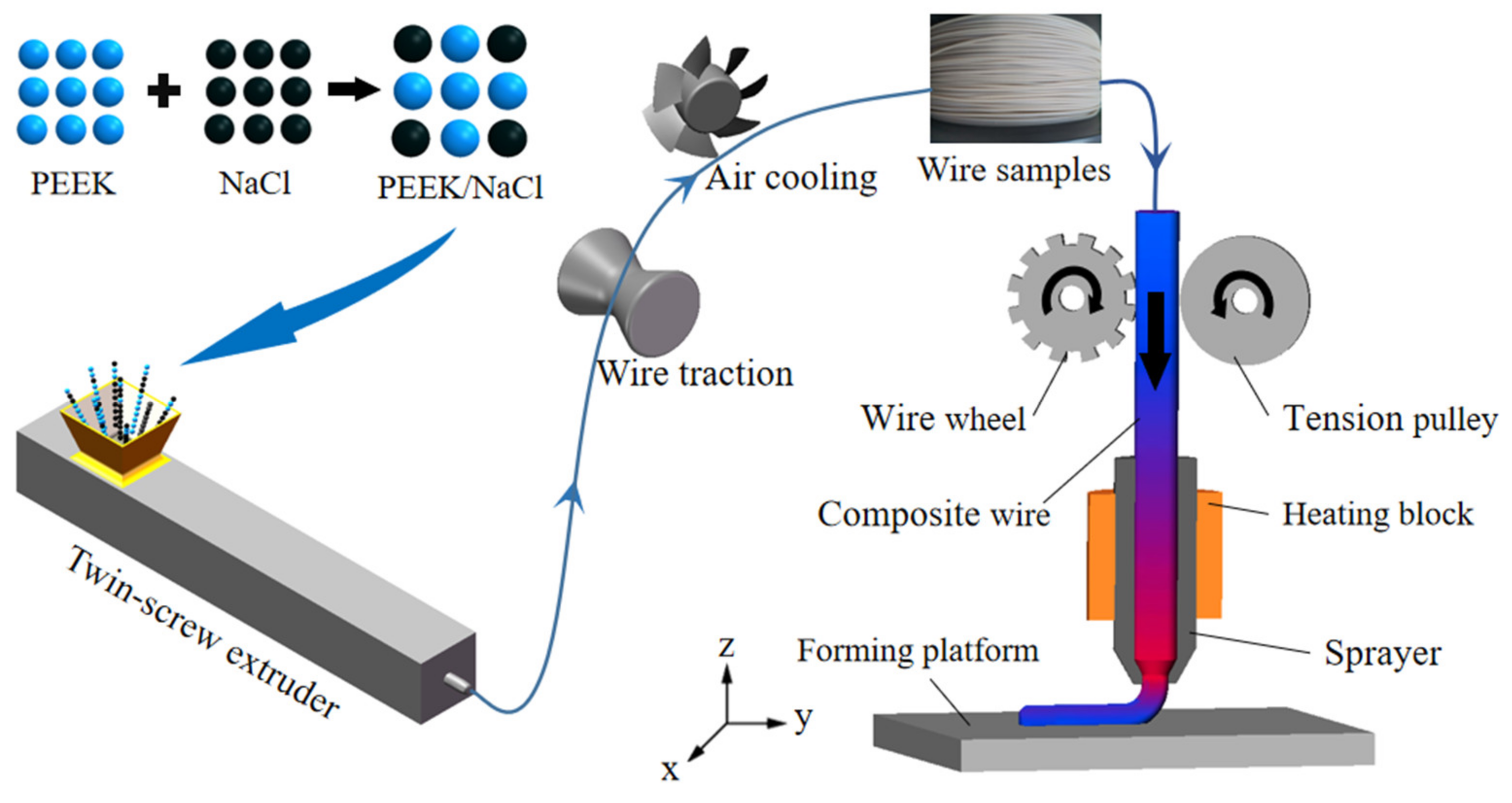
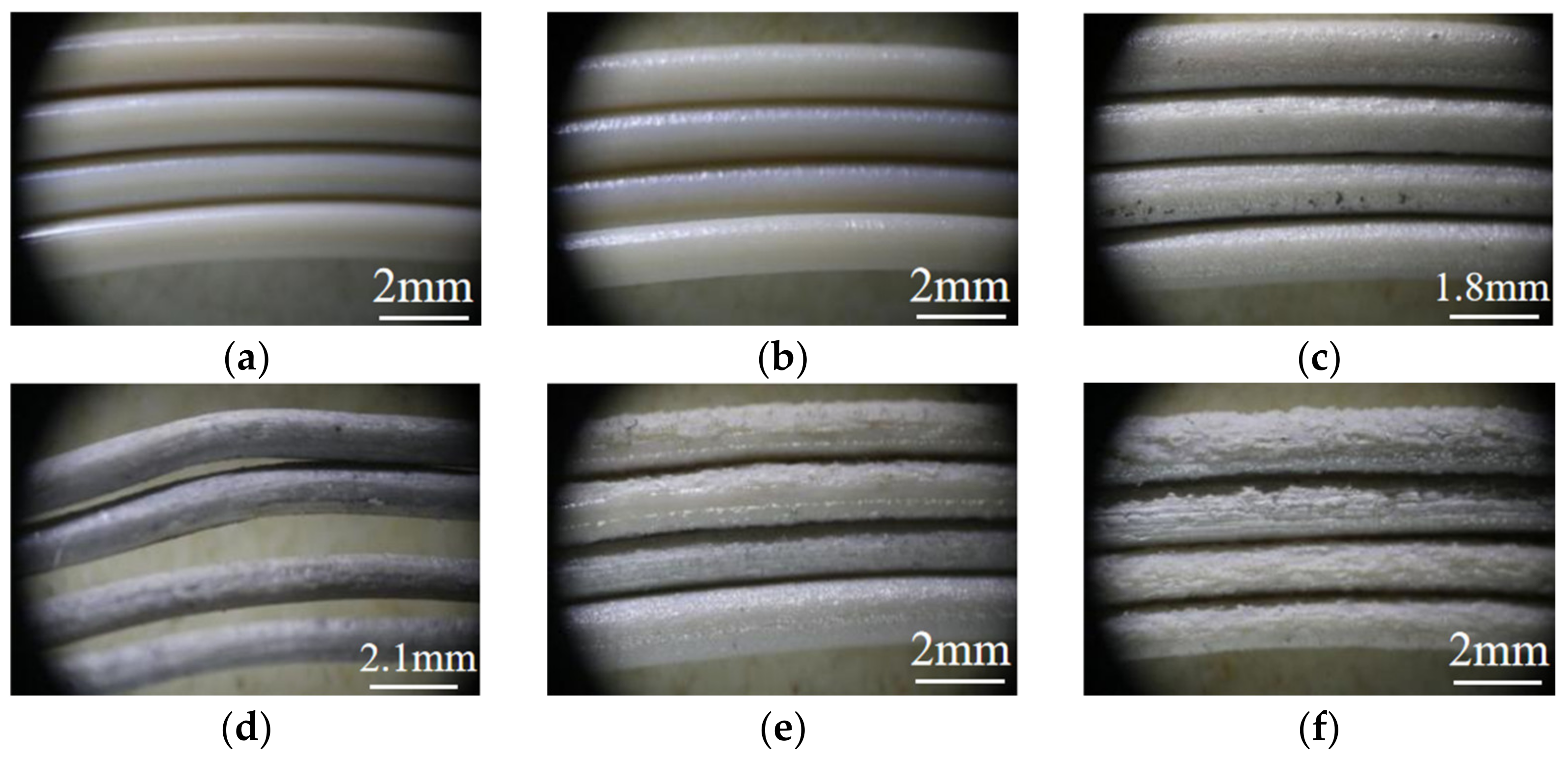
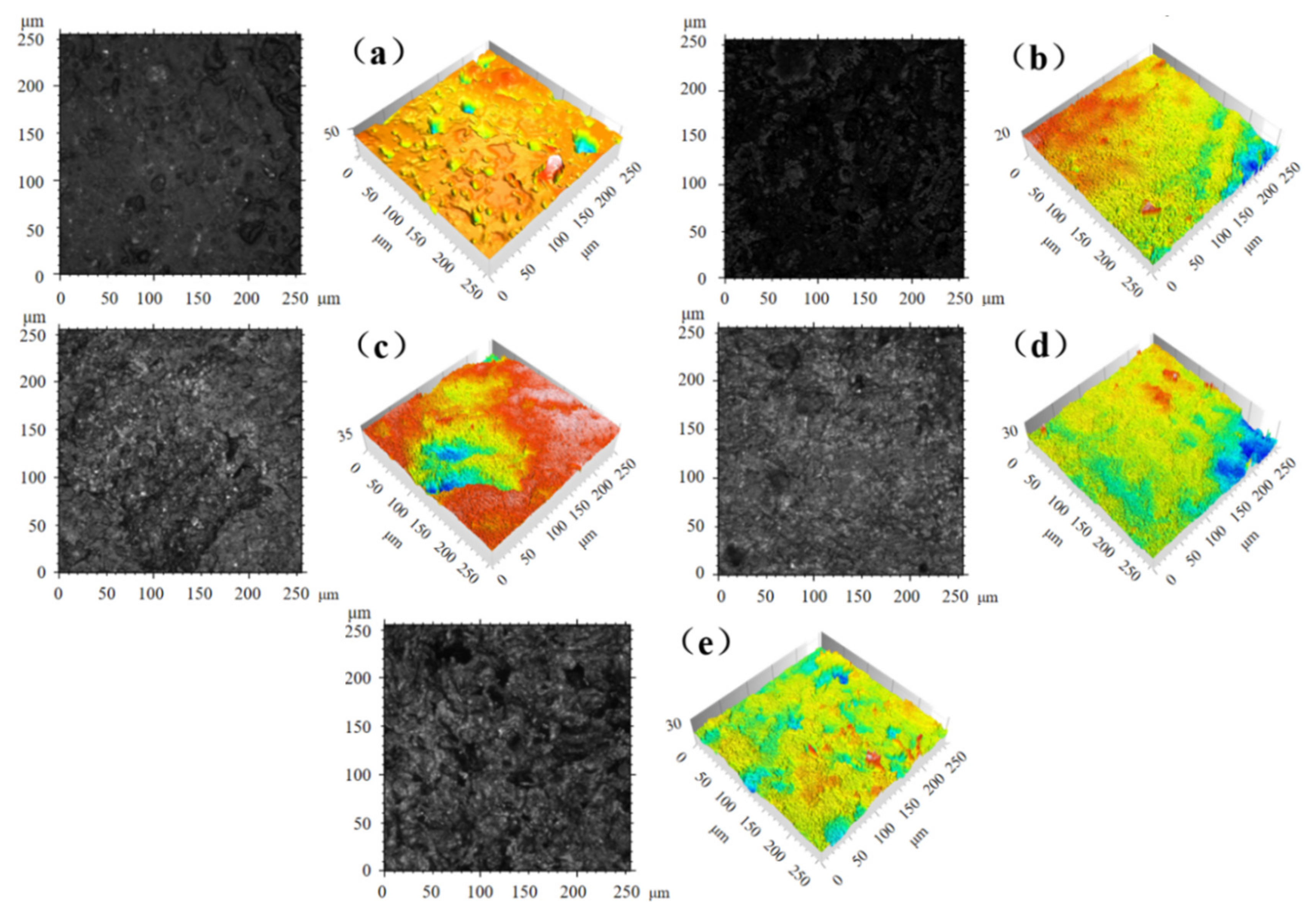
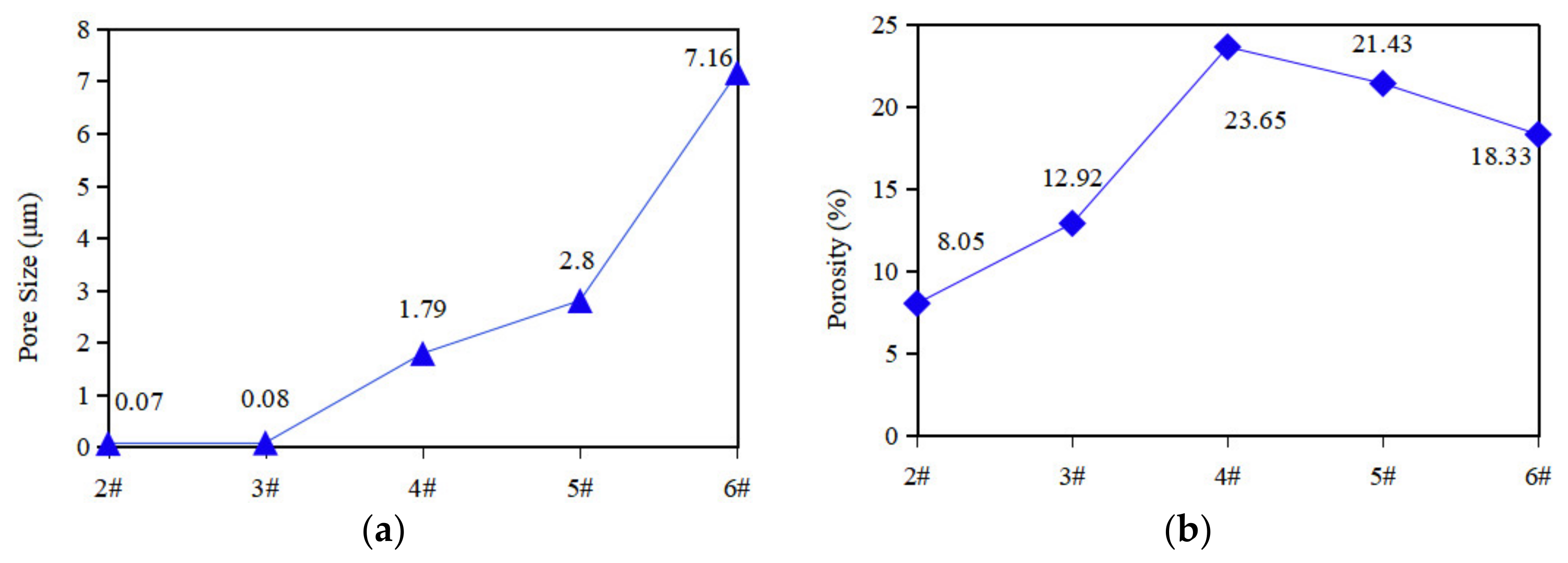
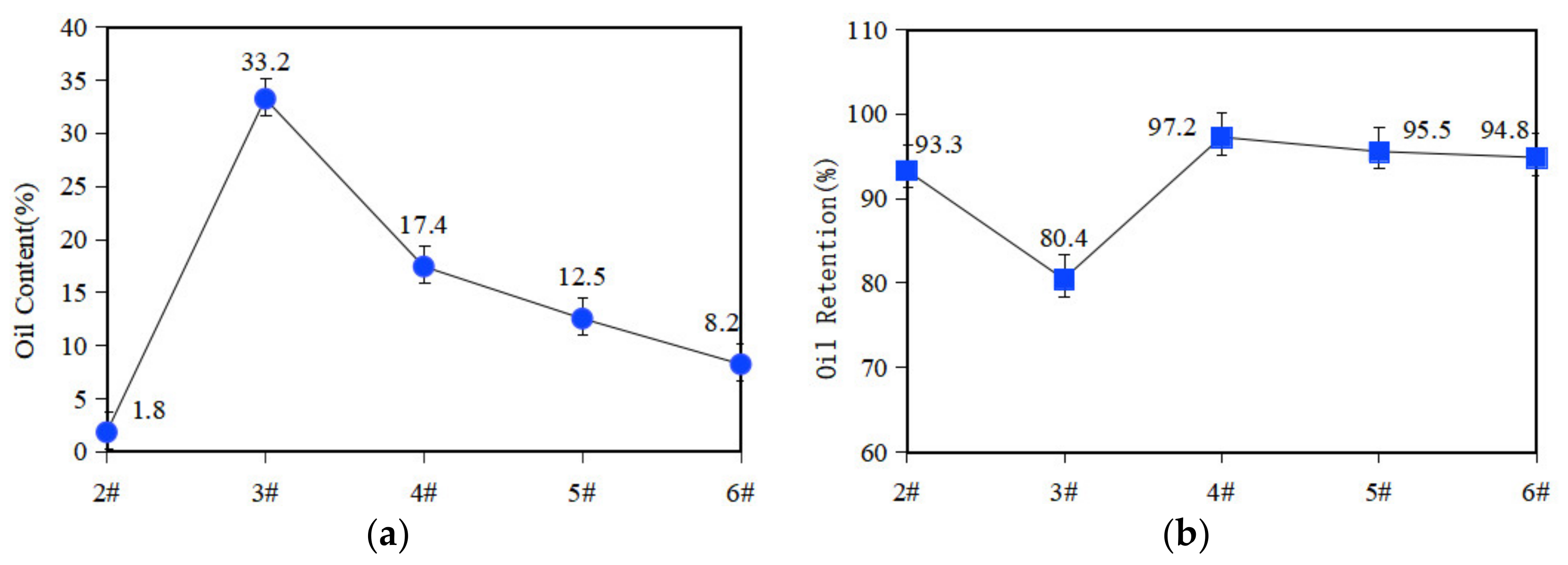
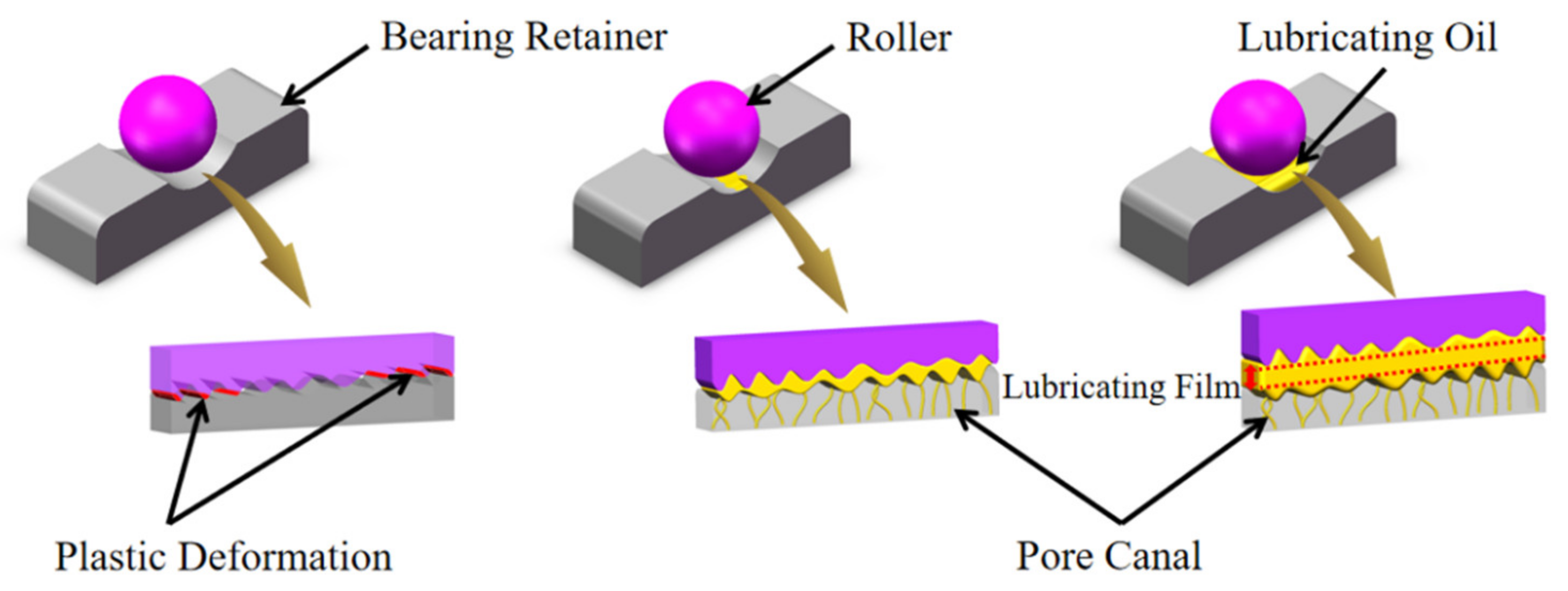
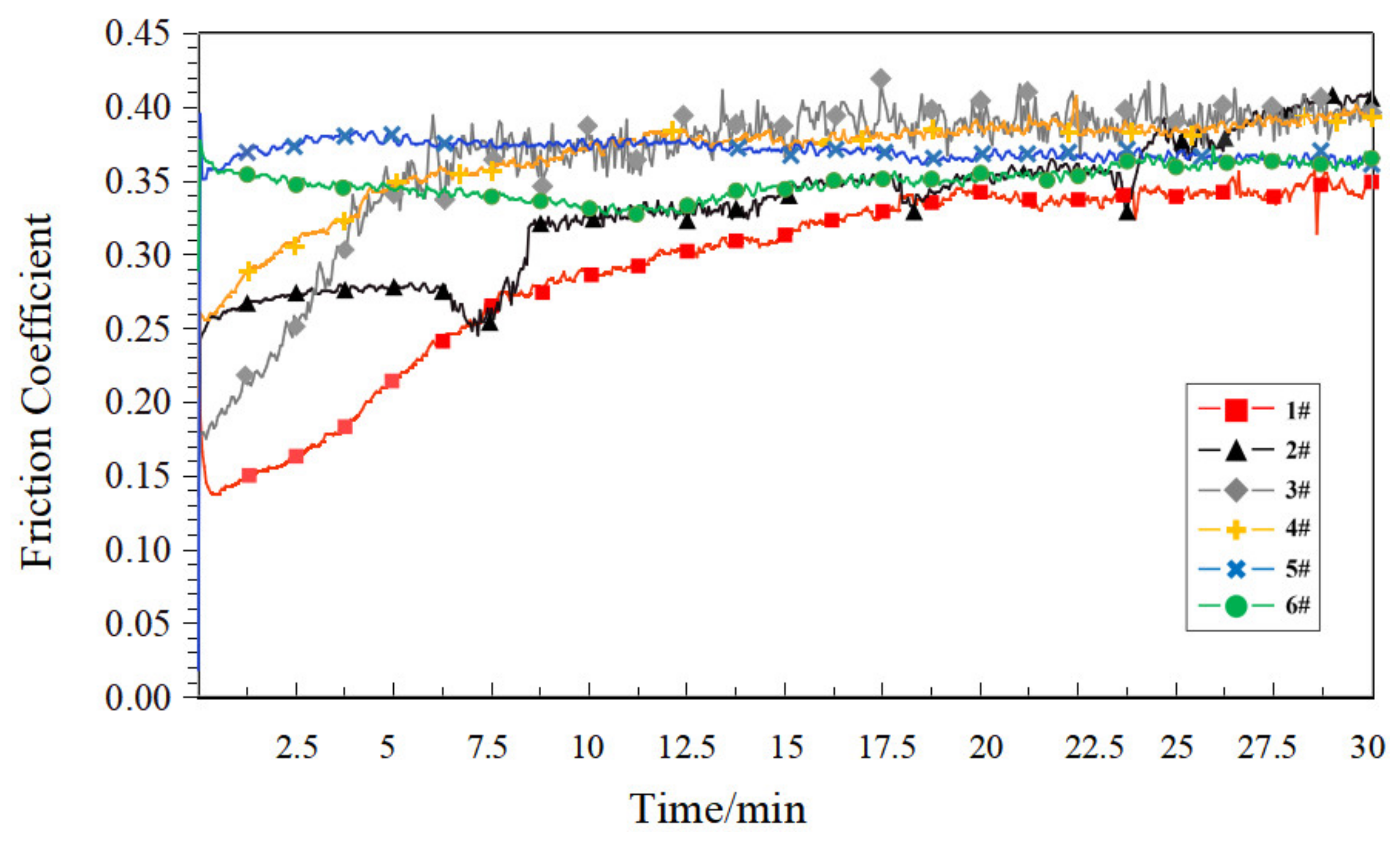
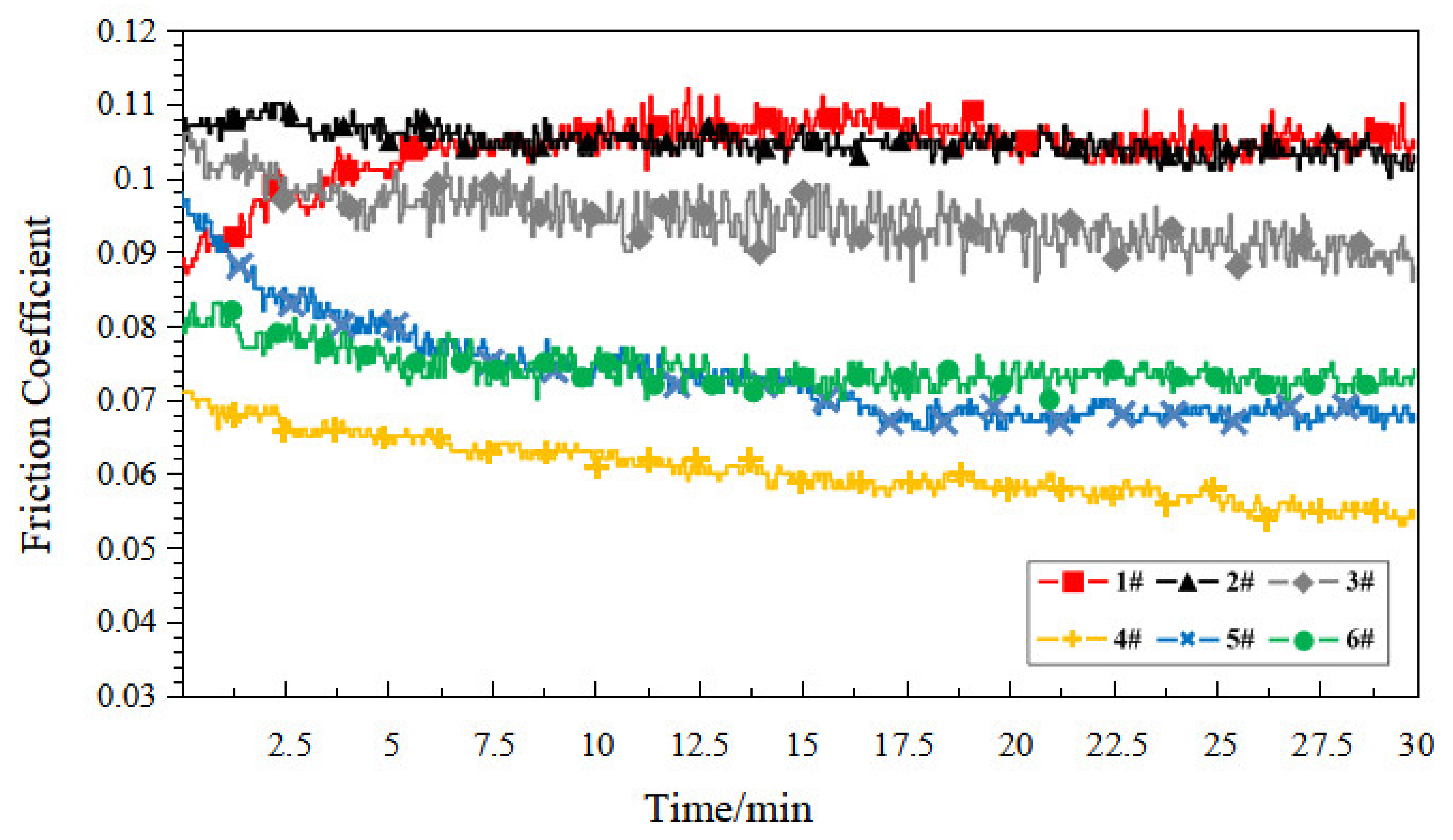
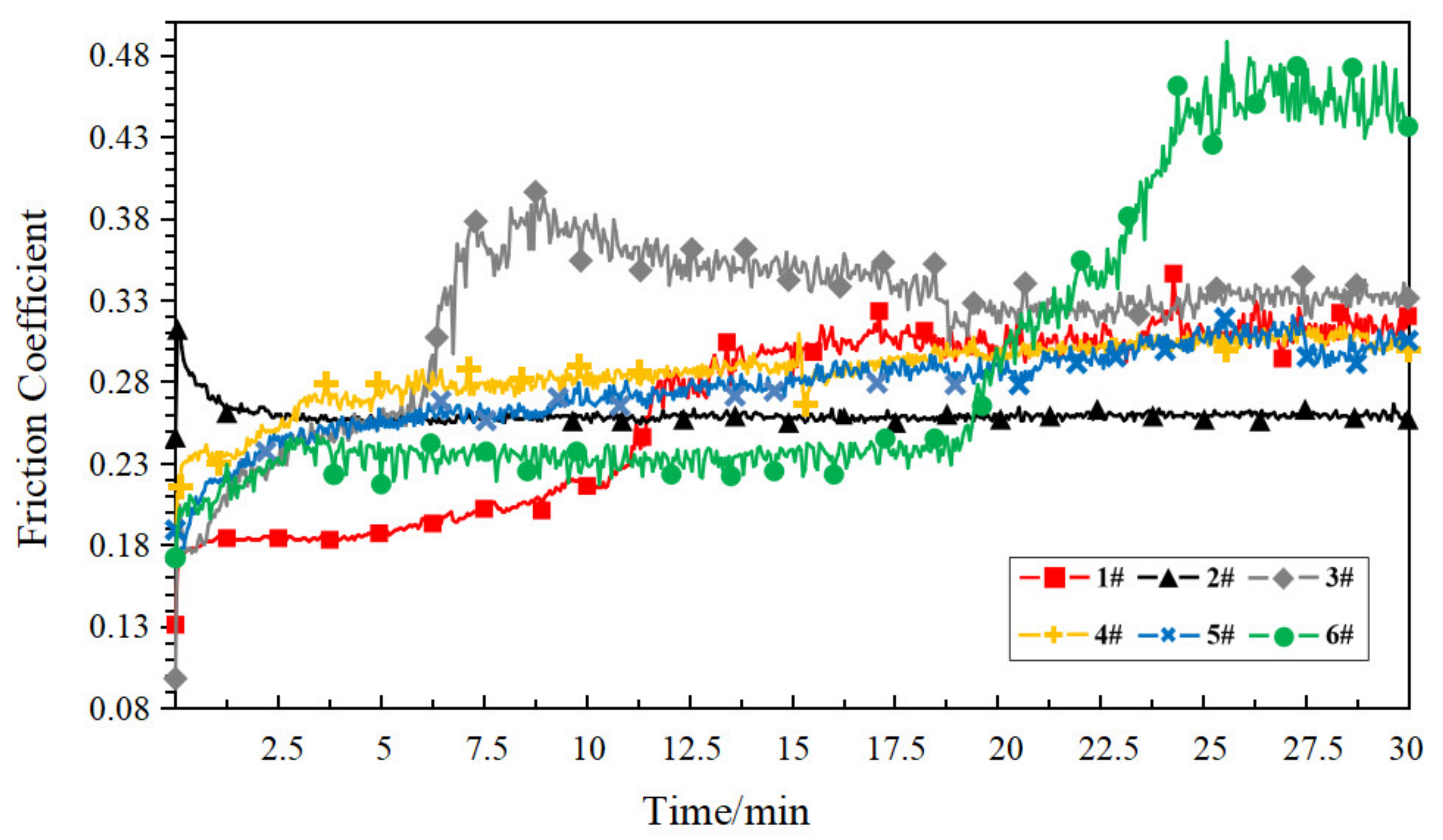
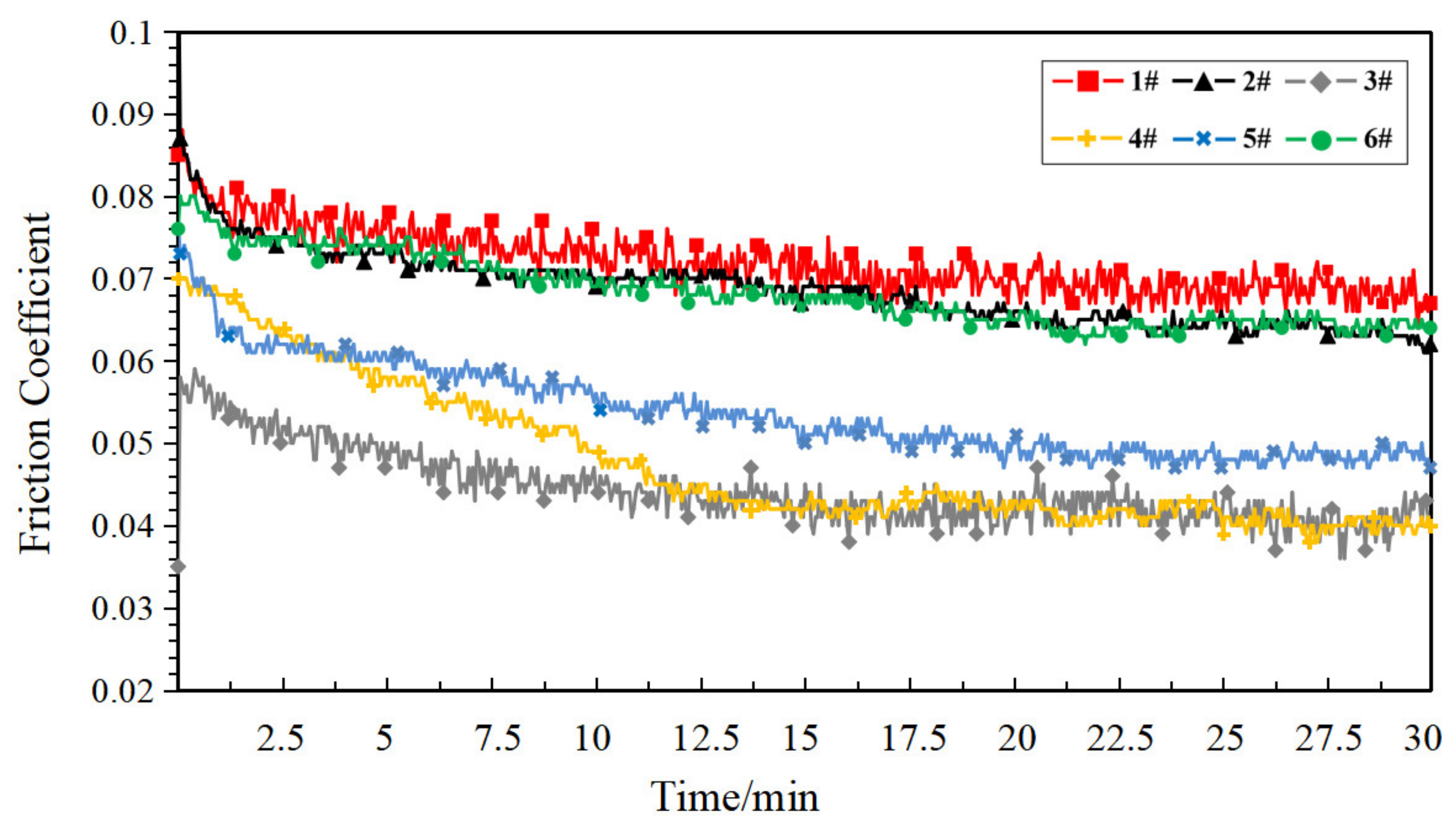
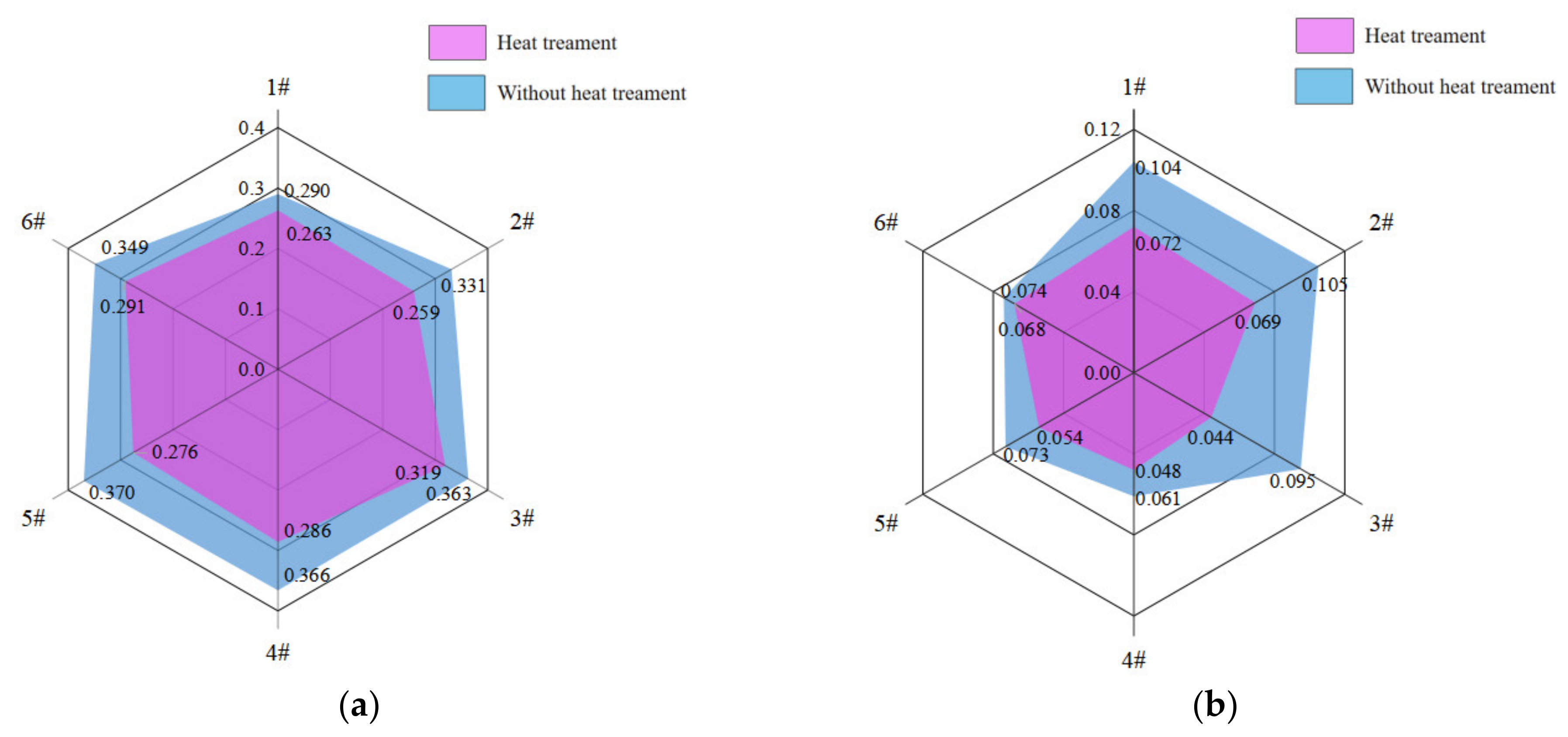
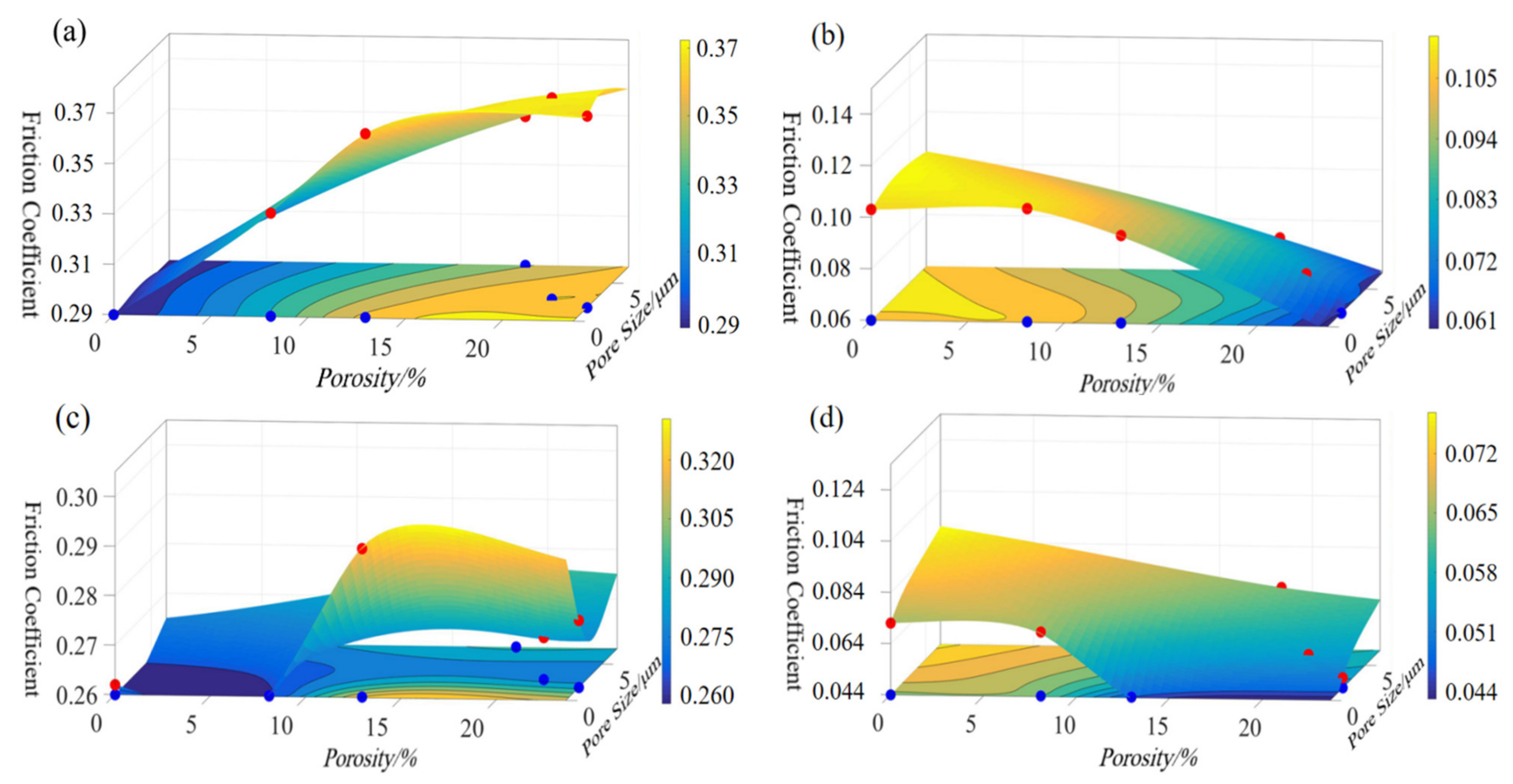
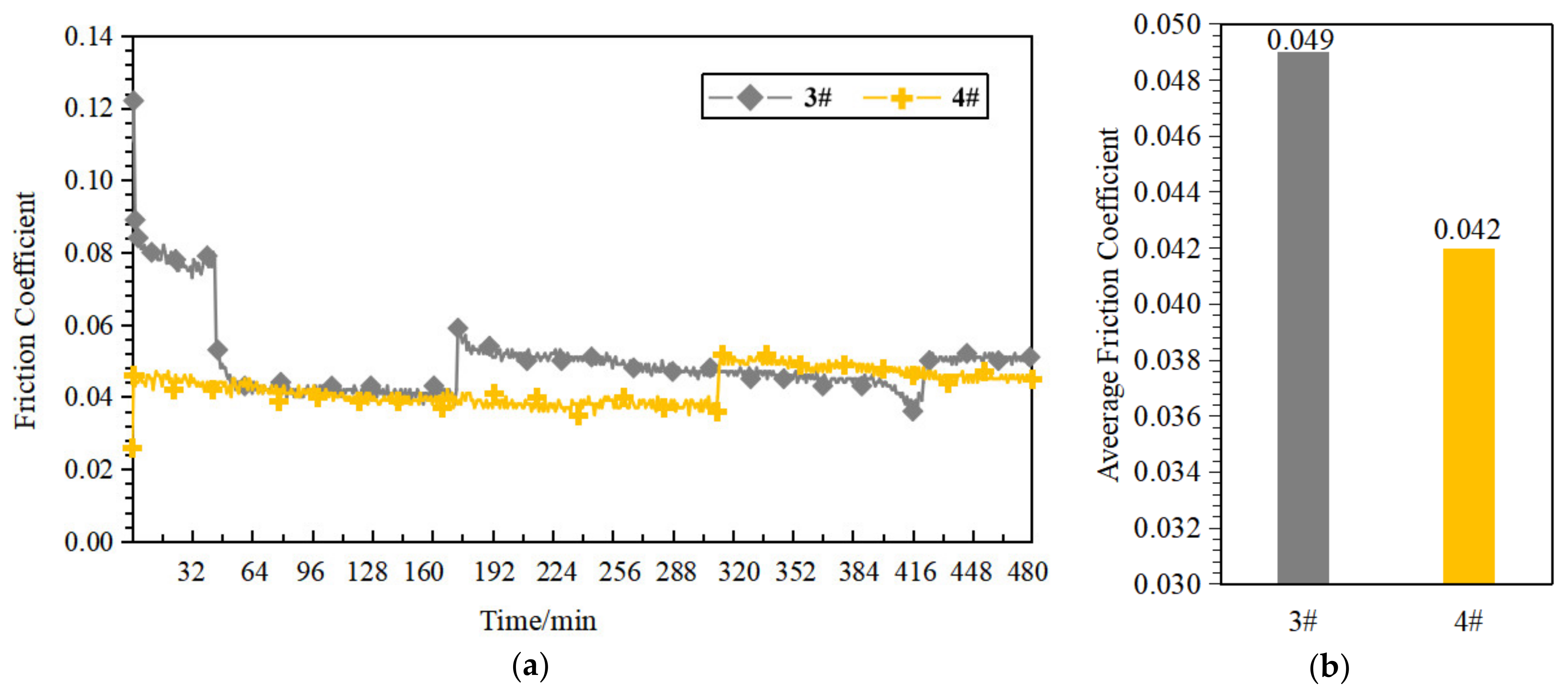
| Materials | Sample Number | |||||
|---|---|---|---|---|---|---|
| 1# | 2# | 3# | 4# | 5# | 6# | |
| PEEK mass fraction/% | 100 | 60 | 50 | 40 | 30 | 20 |
| NaCl mass fraction/% | 0 | 40 | 50 | 60 | 70 | 80 |
| Type of Process Parameters | Sample Number | |||||
|---|---|---|---|---|---|---|
| 1# | 2# | 3# | 4# | 5# | 6# | |
| Screw speed/r·min−1 | 30 | 36 | 43 | 40 | 27 | 18 |
| Zone 1 temperature/°C | 327 | 329 | 328 | 326 | 322 | 320 |
| Zone 2 temperature/°C | 339 | 343 | 344 | 333 | 328 | 323 |
| Zone 3 temperature/°C | 343 | 347 | 348 | 338 | 331 | 325 |
| Zone 4 temperature/°C | 345 | 351 | 351 | 338 | 331 | 322 |
| Zone 5 temperature/°C | 345 | 348 | 351 | 338 | 333 | 327 |
| Zone 6 temperature/°C | 343 | 347 | 348 | 338 | 335 | 328 |
| Zone 7 temperature/°C | 340 | 344 | 344 | 331 | 332 | 322 |
| Corresponding Samples | Distribution Range/% | Average Value/% |
|---|---|---|
| 1# | 21.54~22.01 | 21.74 |
| 2# | 12.31~12.48 | 12.43 |
| 3# | 10.30~12.04 | 11.21 |
| 4# | 9.85~9.96 | 9.91 |
| 5# | 9.69~10.65 | 9.88 |
| 6# | 3.21~3.27 | 3.23 |
| Element | 1# | 2# | 3# | 4# | 5# | 6# |
|---|---|---|---|---|---|---|
| C | 75.83 | 86.97 | 83.32 | 83.76 | 86.84 | 88.51 |
| O | 24.17 | 12.46 | 16.67 | 16.07 | 12.95 | 10.83 |
| Na | 0.00 | 0.26 | 0.00 | 0.16 | 0.00 | 0.00 |
| Cl | 0.00 | 0.31 | 0.01 | 0.01 | 0.22 | 0.67 |
| Sample Number | Non-Heat-Treated Samples | Heat-Treated Samples | ||
|---|---|---|---|---|
| Dry Friction | Starved Lubrication | Dry Friction | Starved Lubrication | |
| 1# | 0.290 | 0.104 | 0.263 | 0.072 |
| 2# | 0.331 | 0.105 | 0.259 | 0.069 |
| 3# | 0.363 | 0.095 | 0.319 | 0.044 |
| 4# | 0.366 | 0.061 | 0.286 | 0.048 |
| 5# | 0.370 | 0.073 | 0.276 | 0.054 |
| 6# | 0.349 | 0.074 | 0.291 | 0.068 |
Publisher’s Note: MDPI stays neutral with regard to jurisdictional claims in published maps and institutional affiliations. |
© 2022 by the authors. Licensee MDPI, Basel, Switzerland. This article is an open access article distributed under the terms and conditions of the Creative Commons Attribution (CC BY) license (https://creativecommons.org/licenses/by/4.0/).
Share and Cite
Zhang, H.; Duan, M.; Qin, S.; Zhang, Z. Preparation and Modification of Porous Polyetheretherketone (PEEK) Cage Material Based on Fused Deposition Modeling (FDM). Polymers 2022, 14, 5403. https://doi.org/10.3390/polym14245403
Zhang H, Duan M, Qin S, Zhang Z. Preparation and Modification of Porous Polyetheretherketone (PEEK) Cage Material Based on Fused Deposition Modeling (FDM). Polymers. 2022; 14(24):5403. https://doi.org/10.3390/polym14245403
Chicago/Turabian StyleZhang, Hui, Mingde Duan, Shikun Qin, and Zhuangya Zhang. 2022. "Preparation and Modification of Porous Polyetheretherketone (PEEK) Cage Material Based on Fused Deposition Modeling (FDM)" Polymers 14, no. 24: 5403. https://doi.org/10.3390/polym14245403
APA StyleZhang, H., Duan, M., Qin, S., & Zhang, Z. (2022). Preparation and Modification of Porous Polyetheretherketone (PEEK) Cage Material Based on Fused Deposition Modeling (FDM). Polymers, 14(24), 5403. https://doi.org/10.3390/polym14245403






